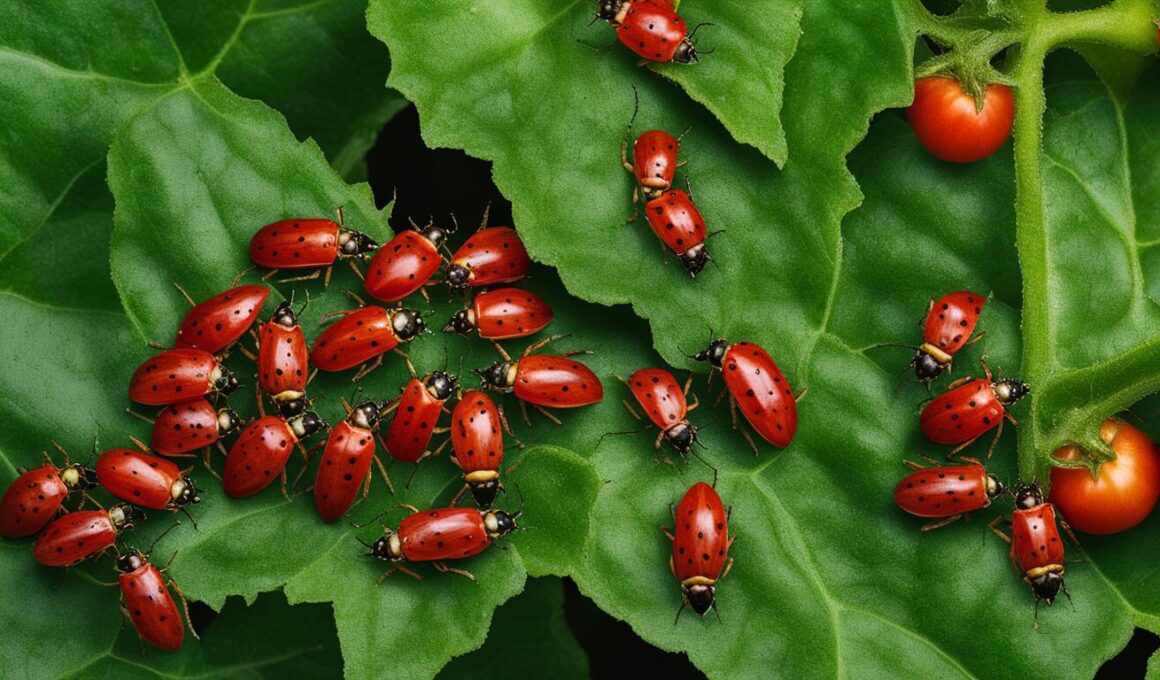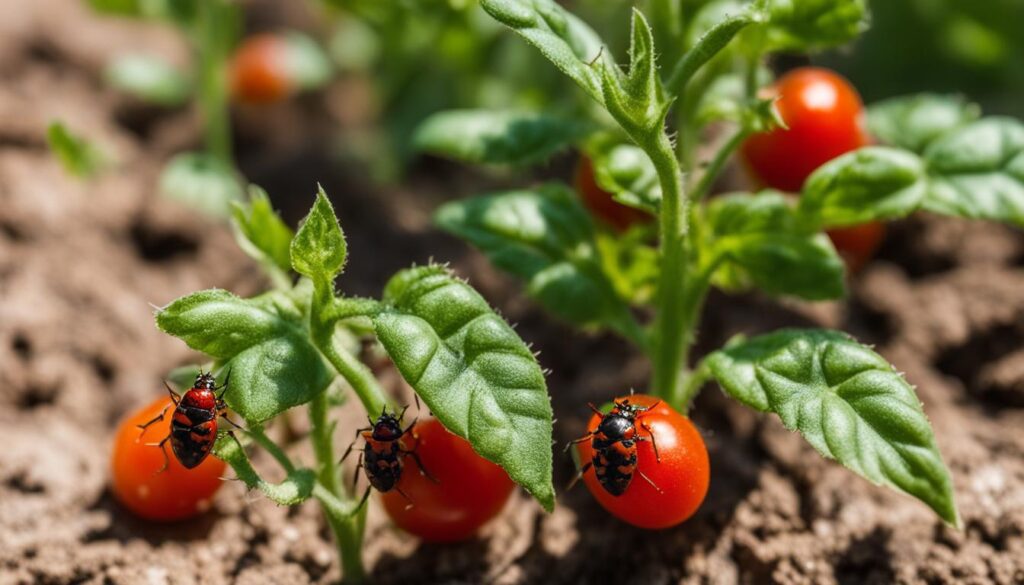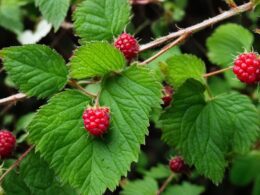Red bugs, also known as tomato pests, can wreak havoc on your precious tomato plants. These pests not only compromise the growth and productivity of your plants but also pose a threat to your overall tomato plant health.
To protect your tomato plants from infestations and ensure their vitality, it is crucial to implement effective pest control measures. By taking proactive steps, you can fend off these pesky invaders and safeguard your tomato plants.
In this article, we will explore key strategies and methods to combat red bugs on tomato plants effectively. We have compiled this information from reputable sources to provide you with reliable guidance in battling tomato plant pests.
Identify and Prevent Common Tomato Pests
To effectively battle red bugs on tomato plants, it is essential to be able to identify and prevent common tomato pests.
When it comes to tomato plants, there are several common pests that can wreak havoc on your hard work. By being able to identify these pests early on, you can take proactive measures to prevent infestations and protect your tomato plants from damage.
To help you in your quest for a thriving tomato garden, here are some of the most common pests that plague tomato plants:
- Aphids
- Hornworms
- Colorado potato beetles
- Cutworms
- Flea beetles
- Blister beetles
These pests can cause damage to the leaves, stems, and fruits of tomato plants if left unchecked. The key to preventing infestations is to know how to identify these pests and implement preventive measures.
Here are some effective strategies for tomato pest identification and prevention:
- Companion Planting: Planting companion plants such as marigolds, basil, and garlic around your tomatoes can help deter pests.
- Biodiversity Promotion: Encouraging a diverse ecosystem in your garden can attract beneficial insects that prey on tomato pests.
- Proper Plant Selection: Selecting resistant tomato varieties can help minimize pest damage.
By incorporating these preventive measures into your gardening routine, you can reduce the risk of pest infestations and protect the health of your tomato plants.
Control and Treat Tomato Plant Pests
Once you have identified the presence of pests on your tomato plants, it is crucial to take immediate action to control and treat the infestation. To effectively combat tomato plant pests, there are several organic pest control methods available that can help eliminate and deter these unwanted invaders.
One effective method is the use of insecticidal soaps. These soaps are specially formulated to target and kill common tomato pests without harming the plants. To use insecticidal soaps, dilute them according to the instructions on the label and apply them directly to the affected areas of your tomato plants.
Neem oil is another natural pest control remedy that can be highly effective against a wide range of tomato plant pests. This oil is derived from the neem tree and has both pesticidal and insecticidal properties. Dilute neem oil according to the instructions and spray it onto your tomato plants, making sure to cover all surfaces thoroughly.
Additionally, horticultural oils can be used to control tomato plant pests. These oils suffocate and smother pests, effectively eliminating them. Follow the instructions on the product label for proper application and timing.
Biological controls, such as the use of predatory insects, can also be employed to control tomato plant pests. Beneficial insects like ladybugs, lacewings, and parasitic wasps feed on common tomato pests, helping to keep their populations in check. You can attract these beneficial insects to your garden by planting flowers that provide nectar and pollen, such as marigolds and daisies.
When utilizing organic pest control methods, it is essential to follow proper application guidelines and timing to ensure their effectiveness. Additionally, practicing good garden hygiene plays a crucial role in pest management. Regularly remove infested leaves and fruits from your tomato plants to prevent the spread of pests and diseases.
By employing these organic pest control methods and maintaining good garden practices, you can successfully control and treat tomato plant pests, ensuring the health and vitality of your tomato plants.
Conclusion
Protecting your tomato plants from the threat of red bugs is essential for maintaining their health and productivity. By implementing effective pest management strategies, you can ensure the overall vitality of your tomatoes. Identifying and preventing common tomato pests such as aphids, hornworms, Colorado potato beetles, cutworms, flea beetles, and blister beetles is crucial in minimizing the risk of infestations.
Controlling and treating tomato plant pests can be achieved using organic methods such as insecticidal soaps, neem oil, horticultural oils, and biological controls. Remember to follow proper application guidelines and practice good garden hygiene by removing infested leaves and fruits. Regular monitoring of your plants will allow you to detect any issues early on.
Creating an optimal environment for your tomatoes involves promoting biodiversity in your garden and adopting organic pest control practices. Encouraging beneficial insects and following sustainable gardening techniques will help keep red bugs at bay. By prioritizing red bug control, tomato plant health, and effective pest management, you can enjoy a bountiful harvest of delicious, healthy tomatoes.
Will Battling Red Bugs on Tomato Plants affect their ability to flower?
Battling red bugs on tomato plants can hinder their ability to flower. These pests suck sap from leaves and stems, weakening the plant and reducing flower production. To combat this, implementing increasing tomato flowering techniques such as proper pruning and fertilization can help improve the plant’s ability to produce flowers.










